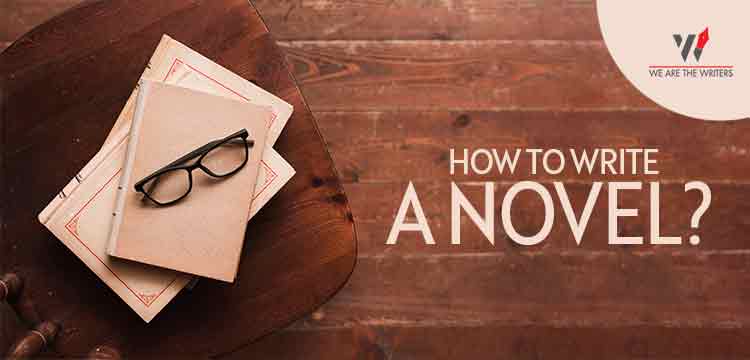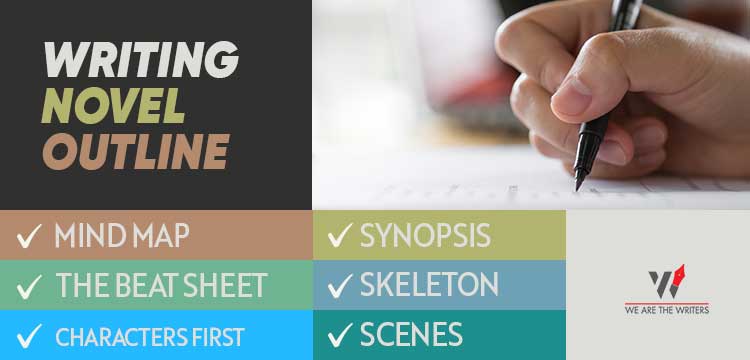Love reading books? Want to have yours as well? But aren’t sure how to write a novel? We get you! Since you haven’t tried out the art of novel writing it might feel mysterious initially. However, once you attempt the endeavor in the required manner, there’s no looking back.
You’ve always wanted to write a novel. But multiple things have stopped you! We understand. And therefore this guide is just for you. Read it till the end to understand the craft of novel writing and start yours immediately!
Suggested Read:
- How to Write Email | Easy Email Writing Format -10 mins read
- How to write an article |7 pro tips you should know
Table of Contents
What do you call novel writing? – What is a Novel Writing
What is a novel?- A novel is a long story written in creative language. The purpose of narrative prose is to entertain while also telling a story. It’s a summary of a sequence of events that contains a cast of people, a setting, and a conclusion.
Depending on the genre, most publishers like novels that are between 80,000 and 120,000 words long. Fundamental parts of a novel include chapters, characters (protagonist, and antagonist), setting, dialogue, point of view, theme, and plot.
Back to where we started, what do you call novel writing?
Novel writing is the craft and science of writing a book. Just like any other form of writing, it includes a proper structure that needs to be followed in order to succeed. The aim of a writer is his or her motivation for writing. The goal of an author may be to entertain, convince, inform, or parody a situation.
You may also like to read : What is creative writing? 7 vital tips for you!
How to write a novel? -Novel writing

Just like the ready, steady and go before a running race, novel writing needs to pump up before reaching the final destination. More the preparation you can do before you begin writing a novel, the higher your possibilities of finishing it.
The steps below will help you strengthen your author’s shield, allowing you to fend against sudden bouts of writer’s block while also laying a solid tale foundation. By the time you complete reading this section, planning how to write a novel would seem easier to you.
Excited? Let’s get started. [ Novel Writing ]
Read our blogs :
STEP 1 : Make a firm commitment to the tale concept
It’s an understood step. Without an idea, what would you even write? While proper setup to write, perfect types of equipment, etc. are all necessary, this novel-in-progress will never come to fruition until you spend time genuinely figuring out what you want to write about.
You might have multiple ideas, sit and take your time. Analyze each of them and choose the one which you are most passionate about. If you don’t even have a single idea, don’t panic, the Internet is your saviour.
It must absolutely engross you to the point that you can’t get it out of your thoughts. Indeed an idea like that can motivate you to sit down at the computer every day and write the masterpiece you’ve always dreamt of.
STEP 2 : Create your lead: a striking one
Your story is null without characters. Interesting characters will get your readers engrossed in your story completely. Some out of the many might also relate.
Your protagonist, also known as your lead, will be the most important figure in your story. This primary character must have a plotline, which means that by the end of the story, he or she must be a changed, better person. Which means he must possess heroic attributes that will be shown in the climax.
Next, there will be an antagonist, a villain, who should be just as fearsome and captivating as your protagonist. Make sure the villain isn’t just terrible because he’s the villain. To make him a worthy antagonist, genuine, and unforgettable, you must have explanations for why he is doing what he does.
Besides, you also need to have other characters. Supporting characters is what we call them. Just a protagonist and an opponent cannot complete a story.
STEP 3 : Create the environment
By environment, we mean the setting of your story. Everything about a story, from character to plot to conflict, and beyond, is determined by its location or context.
If you’re going to write about a setting that isn’t familiar to you, make absolutely sure you do your homework first. If you’re writing about a country or culture that isn’t your own, consider using sensitive readers.
STEP 4 : Introduce the conflicts and risks of your lead
Readers will be interested in your character’s road to reaching or failing to achieve their goal because of the conflict. The conflict is really the totality of the hurdles the protagonist faces all along the way.
There are two types of conflict in books, and it’s a good idea to incorporate both for a truly compelling read.
Internal conflict-
Internal conflict implies what kind of defects in the protagonist’s character will obstruct them from reaching their objectives?
External conflict-
This type of conflict includes what kinds of conditions and difficulties will the protagonist face that is beyond his or her control, preventing them from accomplishing their goal?
After you’ve figured out your novel’s key conflicts, you’ll need to figure out the risks: what may happen if the struggle overpowers the protagonist and they fail to fulfill their objectives?
STEP 5 : Fix your point of view
Picking the point of view from which your story would be told is a significant stage in the writing process that will have a significant impact on the plot itself.
Different POVs you must consider:
- First-person POV– The story is written from the author’s or a fictional narrator’s point of view. The pronoun used is I.
- Second person POV– The reader is personally confronted and asked to put himself in the position of one of the characters. The pronoun used is You.
- Third-person POV– Only one character’s thoughts and feelings are revealed at a time by the narrator. Pronouns used are: he,she,his,her,theirs,etc.
It’s easier to confine oneself with one perspective character if you write your story in First Person(I, me), but Third-Person Limited(his, her) is the most popular for a reason.
STEP 6 : Decide your type
There are two kinds of writers: plotters and outliners or pantsers. As the name suggests, plotters plan their novel before starting. Pantsers follow the “go with the flow” mantra. They have a general overview of what they are writing. But they just sit and write without any outline prepared.
Generally, following the plotter’s style is recommendable. However, it totally depends on which type comforts you the most.
Writing novel outline is like a plan B when writer’s block comes your way. We have a different section to make you clear with writing novel writing. Continue reading…
STEP 7 : Write the climax-
The ultimate resolution, the peak emotional point of your story, comes when your hero faces his ultimate test. The stakes must be dire and failure irreversible.
The conflict that has been building throughout now crescendos to a final, ultimate confrontation and all the major book-length setups are paid off.
Give your readers a wake-up call amidst your story. Allow them to view the explosion as a prize for staying with you.
However, don’t forget that your climax is not the end!
STEP 8 : Provide a great ending
It’s time to conclude your story. Make it so impactful that your readers keep thinking about it even after the completion of the book. They invested so much time and attention in your book, don’t they deserve an amazing end as a reward?
The end should tie all the loose ends and depict a decent wrap-up. Make it clever, quirky, and touchy!
Follow the steps and there you are. Ready with your first draft! Does it end here? No, not at all. Revision is what you need to do next. Proofread. Improvise.
Jerry Jenkins has explained How to write Novel writing in 12 steps
Writing novel outline – How to write a novel

Never confuse a story framework with an outline; you need a framework whether you’re an Outliner or a Pantser.
There are numerous strategies for outlining a novel, but here is a handful that has been proven to work.
Mind Map-
A visual method of planning that depicts the spatial correlation among your story points, characters, themes, conflicts, and chapters.
Synopsis-
Covering two or three pages, a more extensive overview that quickly includes all of the essential tale components: plot, characters, conflicts, and themes.
The Beat Sheet
In brief, record the story’s beats. Each ‘beat’ must be given a value or a punch.
Skeleton
Simply jot down the major plot points. Consider it a map with only the most well-known locations listed – how you can get there is entirely up to you.
Characters first
By prioritizing character arcs, characters and plot, and emotional beats over narrative planning, you may let your people dictate the narrative.
Scenes
Simply list the important scenarios that must occur, as well as the sequence in which they must take place.
Tips for every novel writer – How to write a Novel
Read as much as you can- Take inspiration from other writers. Books that we read and have been reading since childhood influence us. Read your chosen genre and other genres as well. New writers can benefit from history’s most famous and revered authors by studying extensively and carefully.
Name your characters differently-
Give different names to all your characters. Make them remarkable.
Prepare a writing routine- Plan intervals and make a routine. Choose your most active hours of the day. Sit in a silent place and avoid distractions. Many new authors will have to juggle their work with other obligations. Leaving aside regular chunks of time for writing is a necessary first step.
Establish a relationship with the editor-
Editors play a critical role in the publication process. If your novel attracts interest, you’ll need to do everything you can to make sure it’s a perfect fit.
Make it less business and more art-
Write because you love it. Commercial aspects can be taken care of later. Your task is to make your work the greatest, most captivating form of its own, one that is credible inside its imagined world and set of laws. Allow others to worry about the genres.
When you have these writing suggestions in your heart before you begin writing, you’ll be able to maintain your personal style and viewpoint while also exercising the dedication that every writer requires to finish a work of fiction.
You may also read : Digital Storytelling | Learn in 4 easy steps
Novel writing software – what is a novel

If you’ve ever attempted to write a novel, you know it’s not an easy undertaking. It’s not only about writing; you’ll be dealing with a variety of connected and even tangential issues. You should use notes and outlines to arrange your ideas and thoughts.
Novel writing software is an important part of novel writing. A good, dependable novel writing software will assist you with a variety of tasks, including creating a smooth novel outline, collecting notes, formatting, etc.
Have a look at the most frequently used novel writing software that might be of some help to you.
Google Docs-
You must be very familiar with this software. It’s a basic word processor that’s extremely competent for authors searching for free writing software. Its features include the capacity to exchange files and material, as well as converse via comments. You may also go back in time and look at prior versions of your work to see what modifications have already been made to your text file.
Squibler-
The best writing platform around the globe, designed to make the writing process easier for novelists. You can become acclimated to utilizing software for writing by using simple and effective writing software. You will be able to write quickly without breaking attention if you use quickness.
Auto Crit-
It is a novelist’s editing tool that helps them increase accessibility without the need for a qualified editor or proofreader. It makes suggestions for how to improve your text and writing. This is a genre-specific application that allows you to tailor your results by choosing from seven different fiction types.
Scrivener-
Scrivener can handle a lot of things, but it has a unique set of benefits for long-form fiction authors. You can get it for $45, which is a one-time fee. This functions across both desktop and mobile, accessing your manuscript from a variety of locations.
Ulysses-
A software that assembles a document from pieces and combines it into a whole story It features a feature that automatically adds letters with coherence, which any programmers would like. This program allows you to work whenever and wherever you choose.
Grammarly-
Helps you to check the grammar and punctuations of your text. It works as a chrome extension and makes real-time changes if working on Google Docs or Squibler. It corrects your manuscript’s grammar, formatting, tonality, pronunciation, and readability issues. Grammarly features a writing helper that detects problems as you type and offers suggestions on how to correct them.
Ever Note-
Although it isn’t designed exclusively for novelists, you can use it as your novel writing software because it is so beneficial. Evernote will prove to be the greatest program if you work in a group or with numerous authors solely on a single or more book.
Other than the above mentioned, there are various other software, namely- Microsoft word, yWriter, Dramatica and so on. [ novel writing software]
You may also like to read : 6 Simple plagiarism checkers softwares to avoid duplicate content
And it’s a wrap up…
Don’t just let your ideas be restricted to your mind. Let everyone witness it. Initially, you will face problems. You might want to give up. But remember your goal of having a best-selling book out there. Moreover of letting your idea reach out to people. You will definitely be there!
While you follow all the tips, structure, do not forget the title of your story. Make it attractive just like your favorite food is. Practice. Read and one day you will accomplish your journey from “I want to write a novel” to “I completed my first novel”.





 WhatsApp
WhatsApp